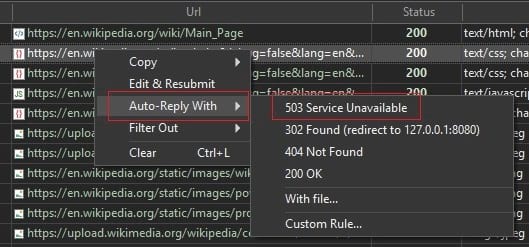Automatically Reply to HTTP Requests
Learn how to simulate server responses without chnaging the server code
Simulate server responses with HTTP Debugger
Auto-responder allows to simulate a server response (or a server error) with a custom HTTP headers and content. This may be useful to test your code in specific situations that are difficult to reproduce in a normal flow.
Request Header Regex
Regexp rules to match the request header. If you provide more then one regexp rule, all of those rules must match. Regexp rules are case insensitive.
Regexp rules samplesMatch HTTP Method and URL Part
^GET\s+/index\.html\s+HTTP/
Match Host Name
Host:.*httpdebugger\.comRespond With Header
The HTTP response header that will be send back to your web browser or application. It must be a valid HTTP header with a status code, and optionally with cookies, CORS headers, etc.
Respond With Content
The HTTP response content that will be send to your web browser or application. HTTP Debugger will automatically calculate the Content-Length for your content, but you need to provide a valid Content-Type for it.
Respond With a File
You can tell HTTP Debugger to respond with a file from your local disk. HTTP Debugger will automatically calculate the Content-Length for that file, but you need to provide a valid Content-Type for it.
Response Header Samples
OK with Some Content
HTTP/1.1 200 OK
Content-Type: text/html
Content-Length: 46
Connection: close
302 Redirect To HTTP Debugger Website
>HTTP/1.1 302 Found
Location: http://www.httpdebugger.com
Connection: close
404 Page Not Found
HTTP/1.1 404 Page Not Found
Content-Type: text/html
Content-Length: 0
Connection: close
500 Internal Server Error
HTTP/1.1 500 Internal Server Error
Content-Type: text/html
Content-Length: 0
Connection: closeCreate rules from from grid's context menu
You can quickly create an auto-responder rule for the selected HTTP request from the grid's context menu.

Note: Browsers tend to cache Internet connections, therefore it's recommended to restart the browser for changes to take effect. To improve the performance, it is recommended to disable the auto-responder, if it is not used.
If you need to modify your server response by adding/removing some header parameters or by making small changes in content, then consider using the HTTP Modifier instead of Auto-responder.



